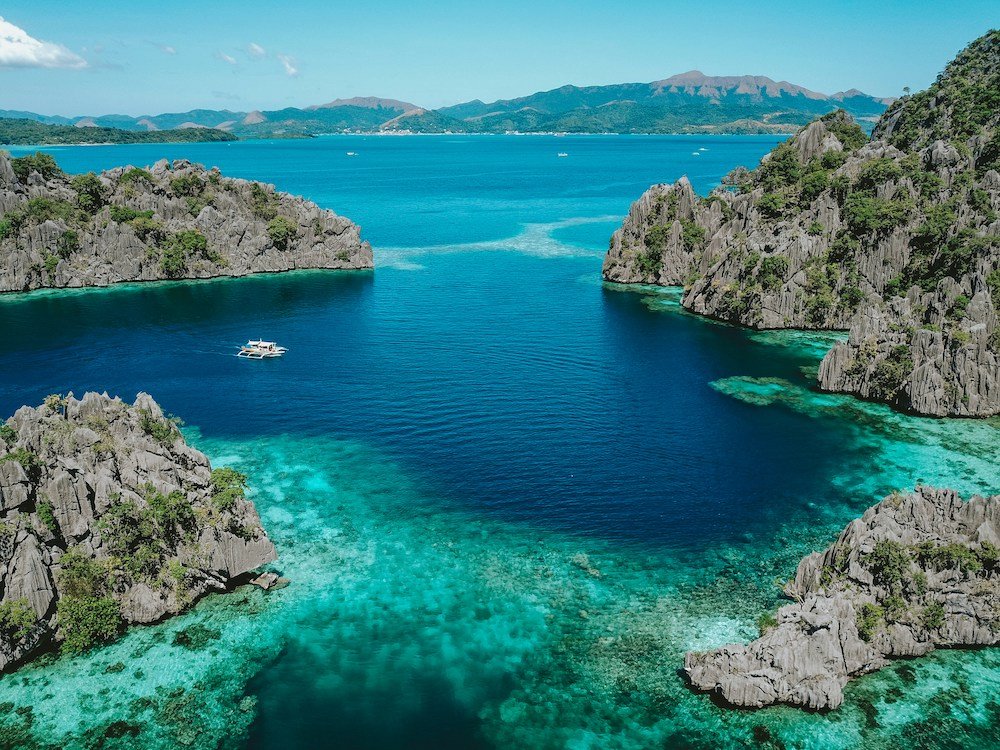
Want to discover the best things to do in Palawan?
Palawan, a gem in the western Philippines, stands as a beacon for travelers seeking a blend of adventure, serenity, and natural beauty.
Recognized globally for its stunning seascapes, rich biodiversity, and pristine natural reserves, this island province offers a retreat into a world where nature’s beauty remains largely untouched by modernity.
Among the myriad destinations in the Philippines, Palawan uniquely captures the heart of anyone who sets foot on its shores, thanks to its enchanting mix of terrestrial and aquatic wonders.
When it comes to the variety of things to do in Palawan, the options are as vast as the island’s landscapes.
Whether you’re an adrenaline junkie looking to conquer the waves, cliffs, and trails, or a nature lover in search of tranquil beaches and mesmerizing underwater ecosystems, Palawan doesn’t just meet expectations—it exceeds them.
The island caters to those seeking relaxation with its secluded beaches, luxurious resorts, and wellness retreats, ensuring that every visitor finds their slice of paradise.
For adventurers, the things to do in Palawan range from exploring the UNESCO-listed Puerto Princesa Subterranean River National Park to diving in the azure waters of the Tubbataha Reefs Natural Park.
Meanwhile, island hopping in El Nido and Coron reveals hidden lagoons, secret beaches, and scenic viewpoints that look as though they’ve been plucked from a dream.
But Palawan isn’t just about its coastal and underwater marvels; it also boasts lush jungles, towering mountains, and cultural sites that offer a glimpse into the island’s rich heritage and the vibrant life of its communities.
In this article, we’ll navigate through 15 amazing things to do in Palawan, each offering a unique way to experience the island’s unparalleled beauty.
From the adrenaline-pumping to the soothingly serene, we’ve curated a list that promises unforgettable adventures for every type of traveler.
1. Exploring the Underground River

Among the most awe-inspiring things to do in Palawan is a visit to the Puerto Princesa Subterranean River National Park.
This UNESCO World Heritage site is not just a testament to the island’s natural beauty but also stands as one of the world’s most remarkable natural wonders.
The park features a spectacular limestone karst landscape with an underground river that flows directly into the sea, creating one of the most unique natural phenomena on the planet.
The Subterranean River Experience
The journey into the heart of the underground river is nothing short of magical.
As you glide through the dark, echoing chambers in a paddle boat, you’re surrounded by stalactites and stalagmites that have formed over millions of years.
The sound of water echoing through the caverns and the sight of rock formations illuminated by the boat’s light create an otherworldly ambiance.
This natural marvel stretches over 8 kilometers, but visitors can explore up to 4.2 kilometers with special permits, while the general tour covers around 1.5 kilometers of the underground river.
Tips for Visiting
- Book in Advance: The Puerto Princesa Subterranean River National Park is a popular destination, and visitor numbers are limited to protect the ecosystem. It’s advisable to book your tour in advance, especially during peak tourist seasons.
- Secure a Permit: All visitors need a permit to enter the park. These can be arranged by tour operators as part of the package.
- Best Time to Visit: The dry season from November to April offers the most comfortable weather conditions for exploring the underground river.
- What to Bring: Wear comfortable clothing and shoes suitable for water. Bring insect repellent and a waterproof camera or phone case to capture the experience without risking damage to your electronics.
- Respect the Environment: The underground river is a protected area, and visitors are expected to respect the natural habitat. This means no littering and adhering to guidelines set by the tour operators and park authorities.
Visiting the Puerto Princesa Subterranean River National Park is undoubtedly one of the top things to do in Palawan for any traveler.
Not only does it offer a glimpse into the island’s geological past, but it also provides a unique adventure that connects you to the natural world in a profound way.
This experience serves as a reminder of the wonders that await when we venture into the heart of nature.
2. Island Hopping in El Nido

Island hopping in El Nido stands out as a quintessential activity and one of the most exhilarating things to do in Palawan.
This adventure offers a front-row seat to some of the most picturesque landscapes in the world, characterized by crystal-clear waters, towering limestone cliffs, and an abundance of marine life.
El Nido’s archipelago is a tapestry of hidden lagoons, secluded beaches, and vibrant coral reefs, making it a paradise for explorers and nature enthusiasts alike.
The Enchantment of El Nido’s Waters
As you embark on your island-hopping journey, the first thing that captures your attention is the clarity of the water—a vivid turquoise that seems almost surreal.
These waters are home to a diverse range of marine species, visible even from the surface.
The backdrop of majestic limestone cliffs adds a dramatic effect to the stunning seascapes, creating scenes so perfect they hardly seem real.
Must-Visit Spots
- Small Lagoon: Accessible by swimming through a narrow opening between limestone cliffs, the Small Lagoon is a tranquil pool of emerald water surrounded by rock formations. Its calm and clear waters are perfect for kayaking and swimming, offering a serene escape from the outside world.
- Secret Beach: Hidden away and accessible only by swimming through a small opening in the limestone walls, Secret Beach is an isolated paradise. This secluded spot is reminiscent of a scene from a movie, with its white sandy beach and clear waters, offering a private slice of heaven where you can relax and soak in the natural beauty of El Nido.
Tips for Island Hopping
- Choose the Right Tour: El Nido offers several island-hopping tour options (Tours A, B, C, and D), each focusing on different highlights. Research and select the one that best matches your interests.
- Pack Smart: Bring sun protection, water shoes for exploring rocky areas, and snorkeling gear to get a closer look at the underwater world.
- Environmental Awareness: Practice responsible tourism by respecting wildlife, not leaving any trash behind, and using eco-friendly sunscreens to protect the marine ecosystem.
Island hopping in El Nido is not just an activity; it’s an exploration of nature’s artistry.
The mesmerizing landscapes, hidden gems, and the serenity of being surrounded by nature’s magnificence make it an unforgettable part of any things to do in Palawan list.
Whether you’re paddling through the lagoons, sunbathing on secluded beaches, or snorkeling among vibrant coral reefs, El Nido offers an unparalleled adventure that captures the essence of Palawan’s natural beauty.
3. Diving in Tubbataha Reefs Natural Park
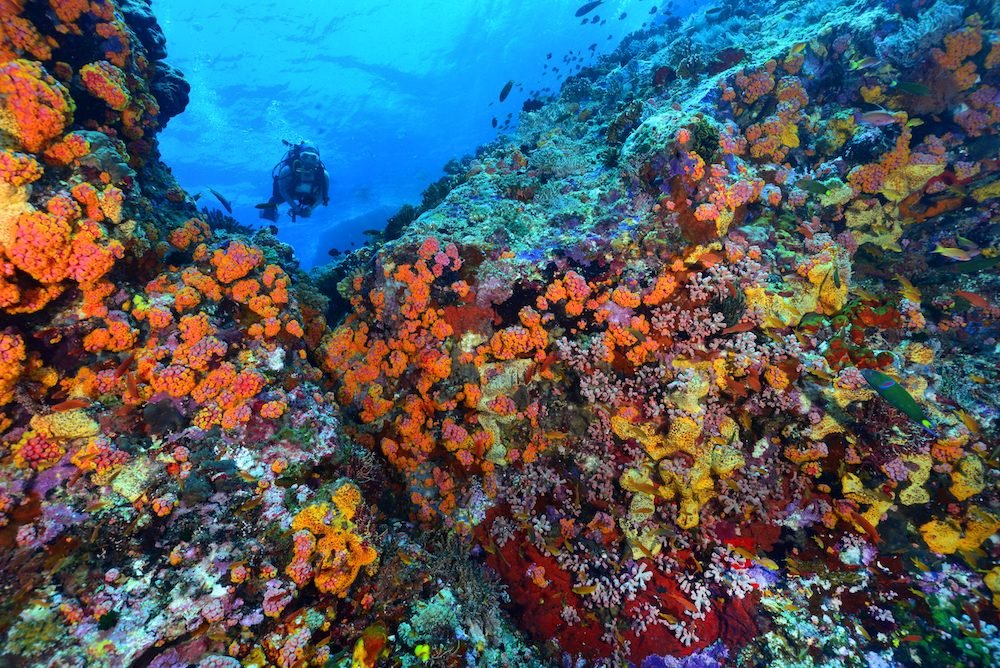
For those with a passion for underwater exploration, diving in Tubbataha Reefs Natural Park is a must-do and ranks highly among the things to do in Palawan.
This UNESCO World Heritage site is an underwater sanctuary that showcases the incredible biodiversity of the Philippines’ marine life.
Located in the Sulu Sea, the park covers an area of over 97,030 hectares, home to a vast array of sea creatures, coral species, and is a vital site for marine conservation.
A Haven of Biodiversity
The Tubbataha Reefs Natural Park is renowned for its pristine coral reefs, which are among the most beautiful and biodiverse in the world.
Divers are treated to encounters with over 600 species of fish, 360 species of corals, as well as whales, dolphins, sharks, and turtles.
The sheer abundance of life and the vibrant colors that paint the underwater landscape are a testament to the health of this marine ecosystem.
Diving here is like entering a different world, one that thrives beneath the waves in peaceful coexistence.
Planning Your Dive
- Best Times to Visit: The diving season in Tubbataha Reefs Natural Park is relatively short, running from mid-March to mid-June. This period offers the calmest sea conditions, highest visibility underwater, and the warmest water temperatures, making it the ideal time for divers to visit.
- How to Get There: Tubbataha is located in the middle of the Sulu Sea, and the only way to reach it is by a liveaboard boat from Puerto Princesa, the capital of Palawan. These dive boats are specially equipped for multiple days of diving and provide accommodations, meals, and diving gear.
- Preparation and Precautions: Due to the remote location and the depth of some dive sites, Tubbataha is recommended for experienced divers. Ensure you’re comfortable with deep water and current diving. It’s also crucial to book your trip well in advance, as slots fill up quickly due to the limited diving season and the popularity of the site among diving enthusiasts worldwide.
Diving in Tubbataha Reefs Natural Park offers an unparalleled opportunity to witness the splendor of the underwater world in its most unspoiled form.
It’s not only an adventure but a privilege to swim among the vibrant marine life that calls these reefs home.
This experience stands out as one of the most exhilarating things to do in Palawan, offering a glimpse into the complexity and beauty of the ocean’s ecosystems.
For anyone looking to connect with nature and explore one of the planet’s most impressive marine biodiversity hotspots, Tubbataha is a destination that should not be missed.
4. Discovering Secret Beaches
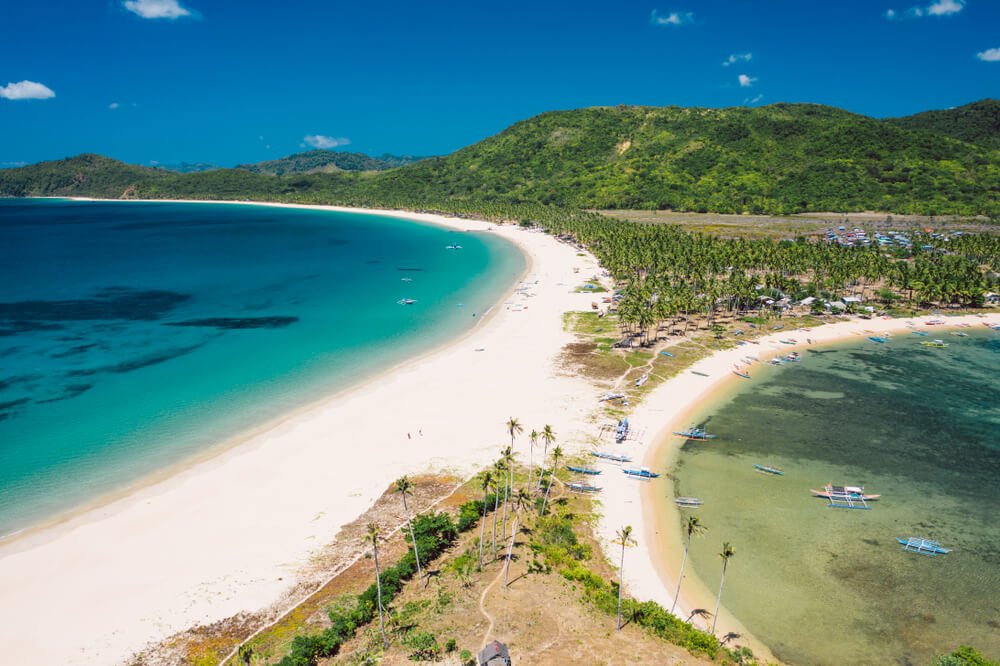
Palawan’s allure isn’t just in its famous sites; it’s also in its hidden treasures.
Discovering secret beaches across this beautiful island province is undoubtedly one of the most serene things to do in Palawan.
With a coastline fringed by lush jungles and dotted with pristine, secluded beaches, Palawan offers a slice of paradise for those willing to explore off the beaten path.
Tips for Finding Secluded Beaches
- Research and Ask Locals: Sometimes, the best information comes from local residents who are more than willing to share knowledge about their hidden gems. Don’t hesitate to ask your hotel staff, tour guides, or the locals you meet for recommendations.
- Rent a Motorbike: Many of Palawan’s secluded beaches are accessible only by dirt roads or paths less traveled. Renting a motorbike gives you the freedom to explore these remote areas at your own pace.
- Consider a Boat Tour: Some of Palawan’s most secluded beaches are accessible only by water. Private boat tours can be customized, allowing you to explore these hidden spots far from the crowds.
- Early Morning Visits: Beaches are less likely to be crowded in the early morning. It’s also the best time to enjoy the serene beauty of Palawan’s coastlines in peace.
Must-Visit Secret Beaches
- Nacpan Beach: Often hailed as one of Palawan’s most beautiful beaches, Nacpan Beach features 4 kilometers of golden sand flanked by crystal-clear waters. Despite its growing popularity, Nacpan retains a laid-back vibe, partly due to its location about an hour’s drive from El Nido town. The journey involves a mix of paved and unpaved roads, making it an adventure in itself. Once there, you’re rewarded with a panoramic view of the sea, framed by gently swaying palm trees—a perfect spot for those seeking tranquility away from the tourist spots.
- Duli Beach: Another hidden gem, Duli Beach, is known for its surfing waves and unspoiled natural beauty. Located slightly north of Nacpan, it’s accessible via a scenic drive through the countryside. Duli Beach remains relatively undeveloped, offering visitors a peaceful retreat with only the sounds of nature and the ocean waves.
Discovering the secret beaches of Palawan is an adventure that rewards you with serene landscapes, untouched natural beauty, and a sense of discovery.
Whether you’re lounging on the soft sands of Nacpan Beach or catching waves at Duli Beach, these secluded spots offer a unique experience far removed from the bustling tourist centers.
This journey to uncover Palawan’s hidden coastlines is a reminder of the island’s vast, unexplored beauty, making it a top entry on any list of things to do in Palawan.
5. Kayaking in Bacuit Bay
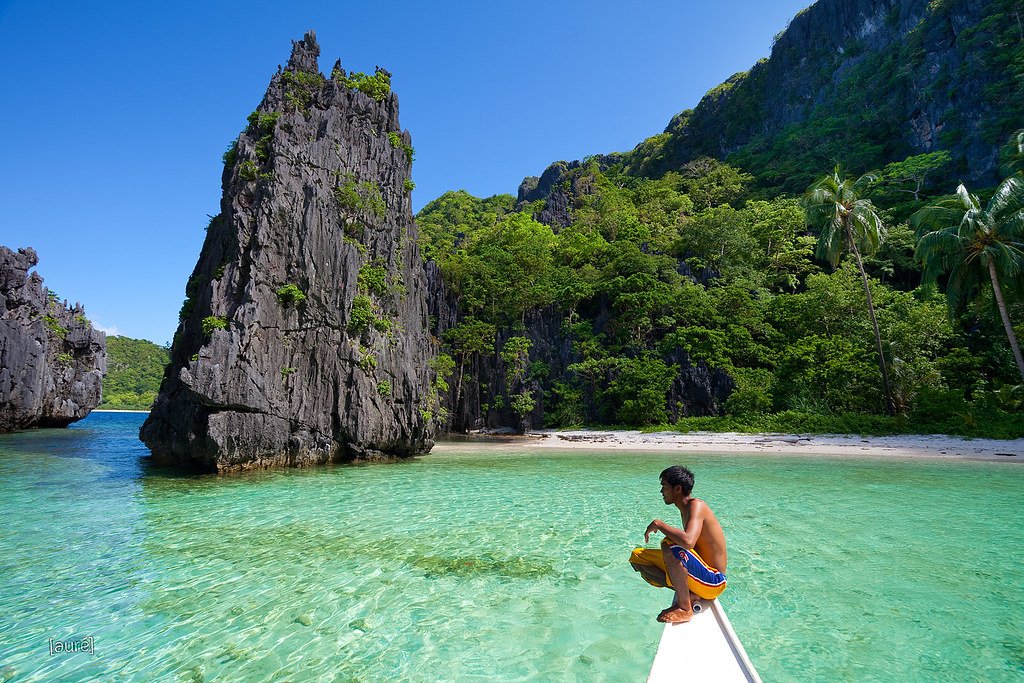
Kayaking in Bacuit Bay offers an intimate way to experience the breathtaking beauty of El Nido, making it an essential item on the list of things to do in Palawan.
This activity allows adventurers to navigate through the bay’s clear turquoise waters at their own pace, weaving between majestic limestone karsts and discovering hidden lagoons and secluded beaches that are otherwise inaccessible.
The Appeal of Kayaking in Bacuit Bay
The allure of kayaking here lies in the freedom it offers. Paddling through the calm waters of Bacuit Bay, you are in control of your journey, able to explore the nooks and crannies of the area’s stunning geology.
The bay’s limestone karsts, some towering hundreds of meters high, are a sight to behold from the water level.
These ancient formations, surrounded by crystal-clear waters, create a serene and otherworldly landscape that kayakers can navigate through, providing a sense of adventure and tranquility.
Kayak Rental Options and Recommended Routes
- Rental Options: Kayaks can be rented from multiple locations in El Nido, including directly from the beach, through your accommodation, or via tour operators. Options range from single to double kayaks, suitable for solo travelers or those wanting to paddle with a partner. Rental prices vary, but expect to pay a reasonable fee for a half-day or full-day rental, including life jackets and sometimes waterproof bags for your belongings.
- Recommended Routes: For a truly memorable experience, paddle out to the Big and Small Lagoons on Miniloc Island. These spots are famous for their stunning beauty but can be crowded with tour boats during peak hours. By kayaking, you arrive on your own terms, perhaps finding moments of solitude. Another recommended route is around Cadlao Island, offering serene beaches, hidden coves, and snorkeling spots teeming with marine life. The waters around Cadlao are generally calm, making it a suitable kayaking destination for beginners and experienced paddlers alike.
Kayaking in Bacuit Bay is more than just an activity; it’s an opportunity to connect with nature, appreciating the silence and majesty of El Nido’s landscapes from the unique perspective of the water.
Whether you’re gliding through open waters or exploring hidden lagoons, kayaking is a must-do for those seeking adventure and tranquility in Palawan.
It encapsulates the essence of what makes Palawan a magical place, offering an unforgettable experience that highlights the natural beauty and serenity of the islands.
6. Hiking to Mt. Tapyas in Coron

Hiking to the summit of Mt. Tapyas is one of the most rewarding things to do in Palawan, particularly for those staying in Coron.
Not only does this hike offer panoramic views of the surrounding islands, bays, and the town itself, but it also presents a modest physical challenge that most visitors can enjoy.
Mt. Tapyas stands as the second highest peak in Coron, making it a perfect vantage point for breathtaking sunsets and a picturesque overview of the area.
The Hiking Experience
The trek to the top of Mt. Tapyas involves climbing approximately 700 steps, a feat that is achievable for hikers of most fitness levels.
The stairs are well-maintained, with rest areas and benches strategically placed for those who need a moment to catch their breath.
As you ascend, the panoramic views gradually unfold, with each step offering a new perspective on Coron’s stunning natural beauty.
Upon reaching the summit, hikers are greeted by the iconic cross that marks the top of Mt. Tapyas, as well as 360-degree views that are truly unmatched.
The sight of the sun dipping below the horizon, casting a golden glow over the Calamian Islands, is a moment of pure magic.
Best Time for the Hike
- Sunset Hike: The best time to hike Mt. Tapyas is in the late afternoon, aiming to reach the summit just in time for sunset. Not only is the temperature cooler, but the reward of the sunset view is unparalleled. The sky transforms into a canvas of vibrant colors, providing a spectacular backdrop for photos and a serene setting to enjoy the moment.
- Early Morning Option: For early risers, a hike at dawn is also a magnificent choice. The air is cooler, and the sunrise views over Coron Bay and the surrounding islands offer a peaceful and invigorating start to the day. Additionally, the trail is less crowded at this time, giving you a more solitary experience.
Hiking Mt. Tapyas is more than just an outdoor activity; it’s an opportunity to witness the awe-inspiring beauty of Coron from a unique vantage point.
The physical challenge of the climb is rewarded with stunning views that capture the essence of the island’s natural allure.
Whether you’re basking in the glow of the sunset or greeting the day at sunrise, this hike is a must-add to your list of things to do in Palawan, offering memories that will last a lifetime.
7. Enjoying the Nightlife in El Nido
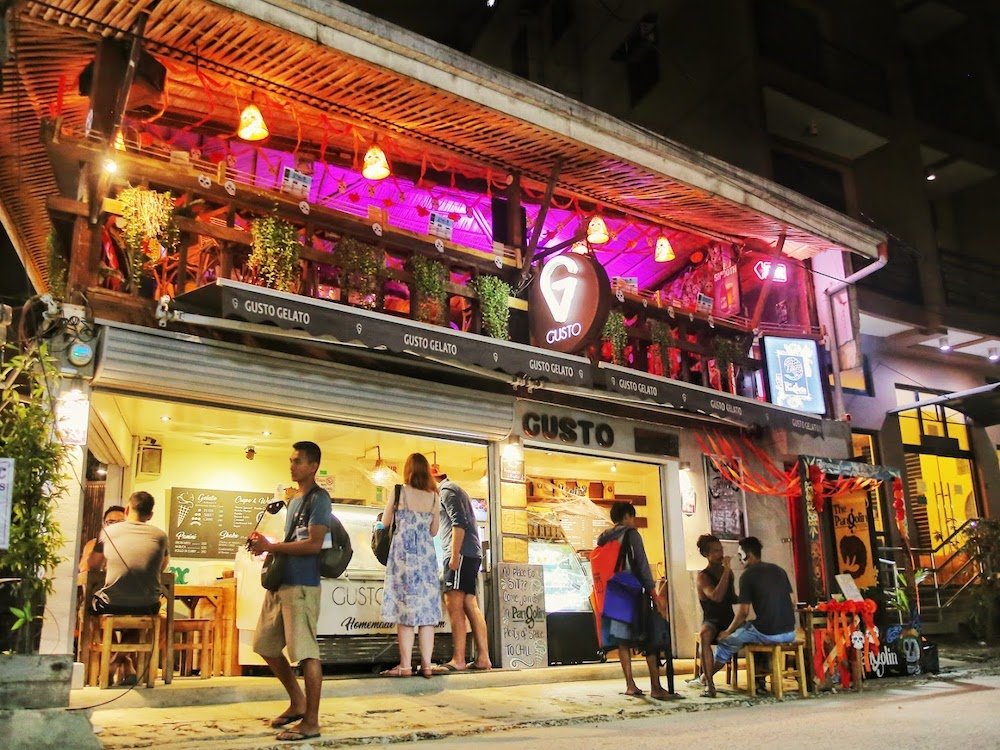
While El Nido is renowned for its daytime adventures and breathtaking landscapes, the island also offers a vibrant nightlife that promises to enrich your Palawan experience.
Exploring El Nido’s nightlife is among the exciting things to do in Palawan for visitors looking to unwind after a day of island hopping or beach lounging.
From beachfront bars to cozy restaurants, El Nido comes alive at night, offering a variety of experiences that cater to every taste.
The Best Bars and Restaurants for Evening Entertainment
- Beachfront Bars: For those who prefer to keep the sand between their toes, beachfront bars along El Nido’s coast provide a relaxed atmosphere with stunning sea views. Enjoy a cocktail as you watch the sunset, followed by live music under the stars. These bars are perfect for socializing with fellow travelers and locals alike.
- Rooftop Bars: To take in the beauty of El Nido from above, head to one of the rooftop bars in town. Offering panoramic views of the limestone cliffs and the bay, these spots are ideal for a romantic evening or a night out with friends. The chill vibe is complemented by a selection of craft cocktails and local beers.
- Local Restaurants: El Nido’s restaurants serve a wide range of cuisines, but for an authentic experience, look for places that specialize in Filipino dishes. Trying local specialties like Adobo, Sinigang, and fresh seafood grilled to perfection allows you to dive deeper into the Philippines’ culinary culture. Many restaurants also feature live bands or cultural performances, adding to the ambiance.
Experiencing Local Culture and Cuisine
- Market Visits: For a taste of local life, visit El Nido’s public market. Here, you’ll find a variety of fresh produce, seafood, and local delicacies. It’s a great place to observe daily life and perhaps pick up ingredients for a beach picnic.
- Cooking Classes: Some local establishments offer cooking classes where you can learn how to prepare traditional Filipino dishes. This hands-on experience not only teaches you about the local cuisine but also gives you a skill to take home.
- Cultural Shows: Keep an eye out for cultural shows and events, especially during local festivals or at certain bars and restaurants. These performances offer insight into the history and traditions of Palawan and the Philippines.
Enjoying the nightlife in El Nido is an essential part of the Palawan experience, blending the island’s natural beauty with its cultural vibrancy.
Whether you’re sipping on a cocktail by the beach, feasting on local dishes, or enjoying live music, the evenings here offer a different perspective on the island’s charm.
This blend of natural beauty, culinary delights, and cultural experiences makes exploring El Nido’s nightlife a must-do for anyone looking to fully immerse themselves in the wonders of Palawan.
8. Snorkeling with Sea Turtles in Balicasag Island
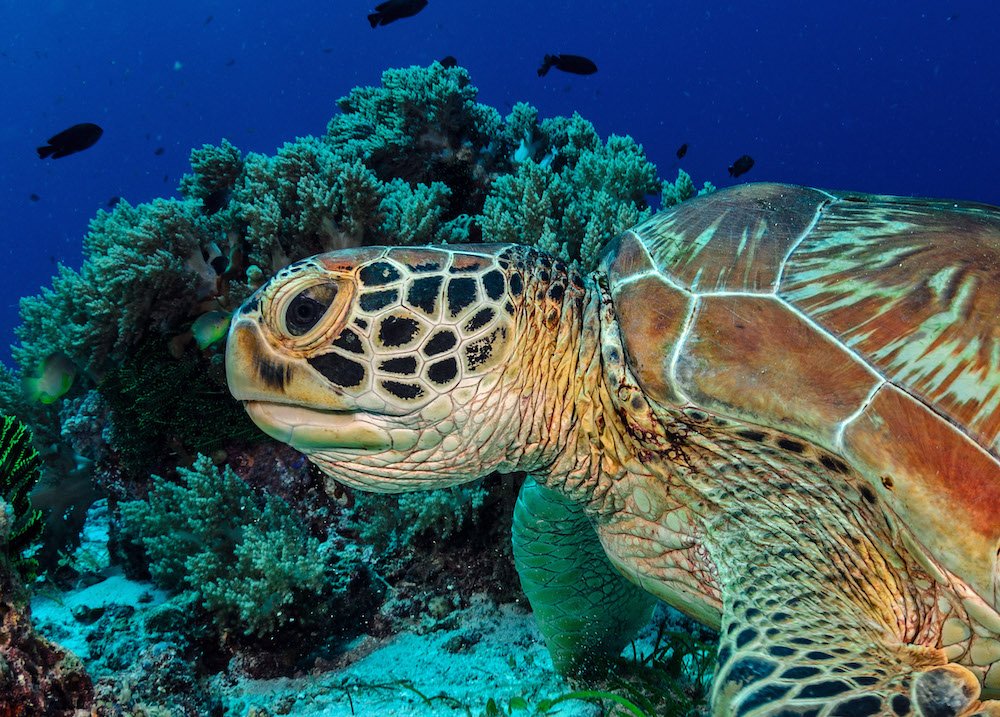
One of the most enchanting things to do in Palawan is snorkeling with sea turtles around the pristine waters of Balicasag Island.
This tiny island, renowned for its vibrant coral reefs and diverse marine life, offers an unparalleled snorkeling experience that brings you face-to-face with gentle sea turtles in their natural habitat.
The clarity of the water and the abundance of underwater life make Balicasag Island a snorkeling paradise not to be missed.
The Snorkeling Experience
As you glide over the coral gardens of Balicasag Island, the variety of marine life is astonishing. The star attractions, however, are the sea turtles that frequent the area.
Snorkelers often have the chance to swim alongside these majestic creatures, observing them in their natural behavior as they feed on seagrass or calmly navigate the clear waters.
Besides sea turtles, you can expect to see a kaleidoscope of tropical fish, colorful corals, and perhaps even a friendly school of jackfish or a passing barracuda, making every snorkeling trip an adventure.
Practical Advice on Snorkeling Tours
- Choosing a Tour: Select a reputable tour operator that practices sustainable tourism. Look for small-group tours to ensure a more personal and less intrusive experience with the marine life.
- Preserving Marine Life: Follow all guidelines provided by your guide to minimize your impact on the reef and its inhabitants. Avoid touching or stepping on corals, and never chase or attempt to touch the sea turtles. It’s important to respect their space and observe from a distance.
- Equipment and Safety: Most tours provide snorkeling gear, but bringing your own equipment can enhance your comfort and experience. Ensure your life jacket and snorkel gear fit well before heading out. Always snorkel with a buddy, and follow the safety instructions provided by your guide.
- Best Time to Visit: The waters around Balicasag Island are clearest and calmest from December to June, making this period ideal for snorkeling. Early morning tours offer the best chance to see sea turtles and avoid the crowds.
9. Visiting the Tabon Caves
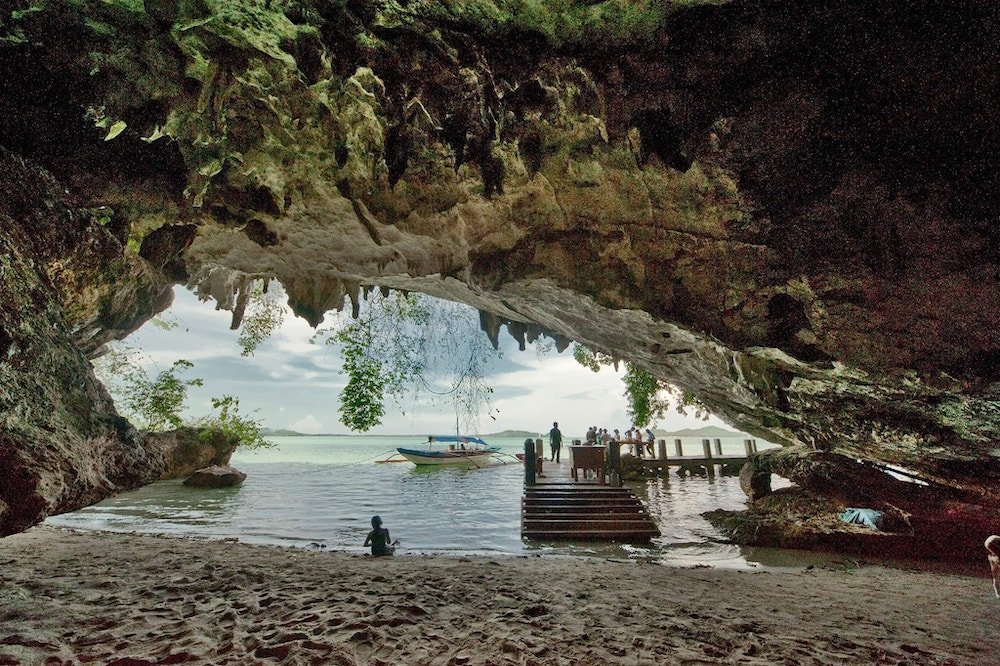
Exploring the Tabon Caves is not only a journey into the heart of Palawan’s limestone landscape but also a voyage back in time, making it a fascinating entry on the list of things to do in Palawan.
Often referred to as the “Cradle of Philippine Civilization,” these caves hold archaeological significance, offering insights into the lives of the earliest inhabitants of the Philippines.
The Historical Significance
The Tabon Caves complex is a series of caves used by humans as far back as 50,000 years ago, with evidence suggesting they were a site for habitation, burial, and possibly early forms of art.
The discovery of the remains of the Tabon Man, one of the oldest human remains found in the Philippines, along with other artifacts like jewelry, tools, and pottery, has provided invaluable insights into prehistoric Filipino culture and the Southeast Asian region’s ancient history.
These finds underline the caves’ importance as a site of historical and cultural heritage.
How to Visit and What to Learn
- Getting There: The Tabon Caves are located in the municipality of Quezon in Palawan. Access to the caves is typically by boat from the city of Puerto Princesa, with local tour operators offering guided trips. These tours not only cover transportation but also provide an educational aspect, with guides sharing knowledge about the caves’ historical and archaeological significance.
- Planning Your Visit: It’s advisable to arrange your visit through a registered tour operator, as this often includes the necessary permits to enter the caves. Since the site is considered a protected area, visitor numbers may be controlled to preserve its integrity.
- Learning Opportunities: The Tabon Caves offer a unique opportunity to learn about early human history in the Philippines. Visitors can explore selected caves within the complex, where guides explain the significance of the archaeological finds and the theories about the lives of early humans in this region. The museum near the cave entrance also provides context with displays of artifacts found in the caves, further enriching the visitor experience.
Visiting the Tabon Caves is a must-do for anyone interested in archaeology, history, and the origins of human civilization in the Philippines.
This experience not only highlights the natural beauty and diversity of Palawan but also connects visitors with the deep historical roots that have shaped the region.
As such, it stands as a profound and enlightening inclusion among the things to do in Palawan, offering a perspective on the island that goes beyond its stunning landscapes to touch on the very essence of human history.
10. Taking a Safari in Calauit Island

Embarking on a safari in Calauit Island Safari Park is one of the most unique things to do in Palawan, offering a chance to experience a slice of Africa in the heart of Southeast Asia.
Established in the late 1970s as part of a conservation initiative, this 3,700-hectare game reserve and wildlife sanctuary is home to a fascinating mix of African and endemic Philippine wildlife, set against the backdrop of Palawan’s stunning natural landscapes.
The Unique Fauna of Calauit Safari Park
Visitors to Calauit Safari Park can expect to encounter a variety of animals roaming freely in large enclosures that mimic their natural habitats.
The park is renowned for its population of African animals, including giraffes, zebras, and antelopes, which were introduced to the island as part of a conservation project.
Alongside these African species, the park also serves as a sanctuary for several species of endangered Philippine wildlife, such as the Calamian deer and the Palawan bearded pig, providing a unique blend of fauna that cannot be found anywhere else in the country.
Arranging Your Visit and What to Expect
- How to Arrange a Visit: Access to Calauit Safari Park is typically through organized tours, which can be booked in Coron. These tours often include round-trip transportation from Coron town to Calauit Island, usually involving a combination of land and boat travel, as well as the entrance fees and a guided tour of the safari park.
- What to Expect: Once you arrive, you’ll embark on a guided tour that takes you through the various sections of the park. You’ll have the opportunity to get up close with the animals, with some parts of the tour allowing for direct interaction, such as feeding the giraffes. The experience is not only thrilling but also educational, offering insights into the challenges of wildlife conservation and the importance of preserving natural habitats.
- Best Time to Visit: The park is open year-round, but the best time to visit is during the dry season, from November to May, when the weather is more favorable for outdoor activities. Early morning visits are recommended to see the animals when they are most active.
- Conservation Efforts: As a visitor, you play a role in the conservation efforts by contributing to the park’s maintenance and the welfare of the animals through your entrance fee. Visitors are encouraged to respect the rules of the park, maintain a safe distance from the animals, and follow the instructions of the guides to ensure a safe and enjoyable experience for everyone.
Taking a safari in Calauit Island Safari Park is a remarkable adventure that highlights the diverse natural beauty and wildlife conservation efforts in Palawan.
This unique experience, combining the thrill of a wildlife safari with the breathtaking scenery of Palawan, makes it a standout activity among the things to do in Palawan.
It offers a memorable journey into the wild, where the worlds of the Philippines and Africa converge in harmony.
11. Exploring the Mangroves in Sabang
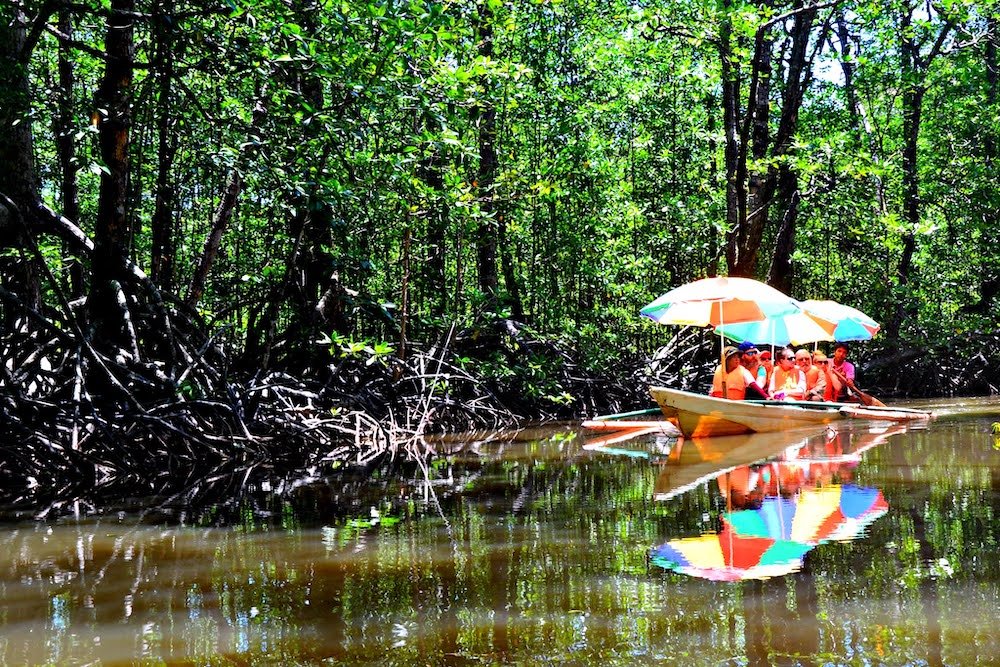
Exploring the mangrove forests in Sabang is an essential and enlightening activity for nature enthusiasts and stands out as one of the most environmentally significant things to do in Palawan.
These mangrove ecosystems play a crucial role in maintaining the health of the planet’s coastal regions, providing a habitat for a diverse range of wildlife, protecting shorelines from erosion, and serving as natural filters that clean the water.
The Ecological Importance of Mangrove Forests
Mangroves in Sabang are not only breathtakingly beautiful but also vitally important to the environment.
They act as nurseries for many marine species, offering a sheltered environment for young fish and invertebrates.
Additionally, mangroves are carbon sinks, absorbing carbon dioxide from the atmosphere at a rate higher than tropical rainforests, thus playing a critical role in combating climate change.
Their dense root systems help prevent shoreline erosion and mitigate the impacts of storm surges, protecting coastal communities.
Kayaking and Guided Tours Through the Mangroves
- Kayaking Tours: One of the best ways to experience the mangrove forests of Sabang is by kayaking. Paddling through the serene waterways allows for a close-up view of this unique ecosystem, where the silence is only broken by the sounds of nature. Kayak tours offer an intimate glimpse into the mangroves’ beauty and the wildlife that calls it home, including various bird species, fish, and even the occasional monitor lizard.
- Guided Tours: For those interested in learning more about the mangroves and their significance, guided tours are available. These tours are led by knowledgeable guides who provide valuable insights into the ecosystem, its inhabitants, and the conservation efforts in place to protect it. Walking paths and boardwalks through some areas of the mangrove forest offer a different perspective and the opportunity to observe the flora and fauna from a vantage point.
- Best Time to Visit: The mangroves can be visited year-round, but the best time for kayaking is during the dry season, from November to May, when the weather is more predictable and conducive to outdoor activities.
- Conservation Efforts: Visitors are encouraged to respect the fragile ecosystem of the mangroves. This means following the guidelines set by the tour operators, such as not littering and avoiding disturbing the wildlife. By participating in these eco-friendly tours, visitors contribute to the local conservation efforts that protect and preserve the mangroves for future generations.
12. Relaxing in Maquinit Hot Springs

Among the many serene things to do in Palawan is unwinding in the therapeutic waters of Maquinit Hot Springs.
This natural wonder is one of the few saltwater hot springs in the world, offering visitors a unique and rejuvenating experience.
Nestled on the outskirts of Coron town amidst lush mangrove forests, Maquinit Hot Springs provides a tranquil retreat for those looking to relax after a day of exploration.
The Health Benefits and Unique Experience
The waters of Maquinit Hot Springs are naturally heated by volcanic activity beneath the earth’s surface, emerging at temperatures of about 40 degrees Celsius (104 degrees Fahrenheit).
Soaking in these mineral-rich waters is believed to have numerous health benefits, including easing muscle soreness, improving circulation, and reducing stress.
The high salt content of the water, being from a mix of freshwater springs and the saltwater of the sea, also offers therapeutic properties, such as detoxification and skin rejuvenation.
The setting of Maquinit Hot Springs, with its natural rock pools and views of the surrounding jungle, adds to the experience, allowing visitors to connect with nature in a peaceful and relaxing environment.
Nighttime visits are particularly magical, as the steam rises from the hot pools under a canopy of stars, creating a soothing and almost mystical atmosphere.
Location and Best Times to Visit
- Location: Maquinit Hot Springs is located approximately 30 minutes by tricycle or car from Coron town proper. The journey itself, winding through local villages and natural landscapes, adds to the overall experience of visiting the hot springs.
- Best Times to Visit: The hot springs can be enjoyed year-round, but they are particularly inviting in the evening after a day of hiking, snorkeling, or island hopping. Not only does the cooler air make the warm water more appealing, but the nighttime ambiance also enhances the relaxing experience. The springs are less crowded in the early morning or late evening, offering a more private and serene experience.
- Visiting Tips: Visitors are encouraged to bring their own water and snacks, as facilities at the hot springs are limited. It’s also advisable to wear comfortable swimwear and bring a towel and a change of clothes. Remember to stay hydrated, especially if you plan to soak in the hot springs for an extended period.
Relaxing in Maquinit Hot Springs is a must-do for anyone visiting Palawan, providing a unique opportunity to enjoy the therapeutic benefits of natural hot springs while immersed in the island’s stunning natural beauty.
Whether you’re looking to soothe tired muscles after adventurous days or simply seeking a moment of relaxation, Maquinit Hot Springs offers a memorable and healthful experience that complements the diverse array of things to do in Palawan.
13. Zipline Adventure in Ugong Rock
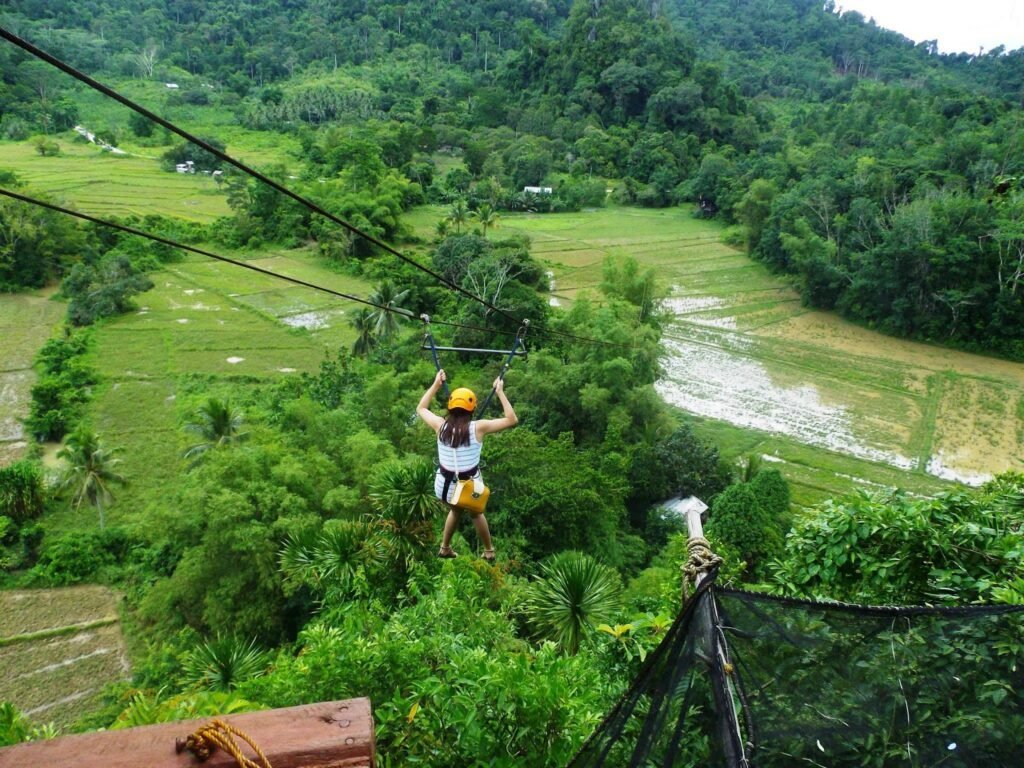
For adrenaline seekers exploring Palawan, a zipline adventure at Ugong Rock offers a thrilling blend of excitement and natural beauty, making it a standout among the adventurous things to do in Palawan.
Situated in a limestone karst landscape, Ugong Rock is named after the echoing sound produced when the rocks are tapped.
This adventure activity not only provides an adrenaline rush but also the chance to witness the stunning scenery of Palawan from a unique vantage point.
The Thrill of Ziplining in a Natural Setting
Ziplining at Ugong Rock involves strapping into a harness and gliding across a steel cable, suspended high above the ground, from the top of the karst formation to its base.
The experience offers an unparalleled sense of freedom and exhilaration as you fly over lush landscapes, with panoramic views of the surrounding countryside.
The zipline at Ugong Rock is notable for its impressive length and the breathtaking speed at which participants can travel, making it an unforgettable experience for thrill-seekers and nature lovers alike.
How to Book This Activity and Safety Tips
- Booking the Adventure: To experience the zipline at Ugong Rock, it’s best to book in advance through a tour operator in Puerto Princesa or El Nido. Many operators offer the Ugong Rock zipline as part of a larger tour package, which might also include other attractions such as the Puerto Princesa Subterranean River. On-site registration is available, but booking ahead ensures your spot and often includes transportation to and from the site.
- Safety First: Ugong Rock Adventures places a high priority on the safety of all participants. Before taking on the zipline, you’ll be equipped with a helmet and harness, and trained staff will provide a safety briefing. It’s important to listen carefully to the instructions and follow all guidelines to ensure a safe and enjoyable experience.
- What to Wear: For this activity, wear comfortable clothing that doesn’t restrict movement, and closed-toe shoes for the best grip and protection. Long hair should be tied back, and it’s advisable to leave valuables and loose items behind or securely fastened.
- Best Time to Visit: The zipline can be enjoyed year-round, but the best weather conditions are typically from December to May, during the dry season. Early morning visits can help you avoid the crowds and the heat of the midday sun.
Embarking on a zipline adventure in Ugong Rock is not just about seeking thrills; it’s also an opportunity to connect with the natural beauty of Palawan from an extraordinary perspective.
This activity combines adventure, scenery, and the unique charm of Palawan, making it an essential experience for visitors looking for dynamic and exciting things to do in Palawan.
14. Culinary Tour in Puerto Princesa

Embarking on a culinary tour in Puerto Princesa is an indulgent way to experience the local culture, making it a savory addition to any list of things to do in Palawan.
The capital city of Palawan is not only a gateway to the island’s natural wonders but also a melting pot of flavors that reflect its rich cultural heritage.
From fresh seafood to exotic fruits and traditional Filipino dishes with a unique Palawan twist, Puerto Princesa offers a culinary adventure for every palate.
A Taste of Local Palawan Cuisine
Palawan’s cuisine is a testament to the island’s biodiversity, featuring an array of dishes made from the freshest ingredients sourced from its surrounding seas and fertile lands.
Seafood is a staple, with options ranging from grilled fish and kinilaw (Filipino ceviche) to more exotic offerings like tamilok (woodworm), a local delicacy that’s sure to challenge adventurous eaters.
Where to Find the Best Dishes
- Ka Lui Restaurant: One of the most renowned dining spots in Puerto Princesa, Ka Lui offers a menu that emphasizes fresh seafood and local produce, served in a traditional Filipino setting. The restaurant’s ambiance, characterized by its open-air bamboo structure, adds to the dining experience. Reservations are highly recommended, as this popular spot fills up quickly.
- La Terrasse: For those looking to taste organic, locally sourced dishes, La Terrasse features a farm-to-table concept that highlights the flavors of Palawan. The restaurant offers a variety of options, from traditional Filipino dishes to international cuisine, all prepared with a focus on sustainability and health.
- Bilao at Palayok: This restaurant is famous for its Filipino platters served in a bilao (woven bamboo tray), perfect for groups looking to sample a variety of dishes. Their specialty includes Palawan’s versions of adobo, sinigang, and seafood dishes, providing a flavorful overview of the island’s culinary diversity.
Local Delicacies to Try
- Tamilok: Often found in mangrove areas, tamilok is a woodworm that’s eaten raw, dipped in vinegar, and is said to taste like oysters.
- Crocodile Sisig: A unique twist on the classic Filipino dish sisig, this version uses crocodile meat, known for its tender texture and flavor.
- Halo-Halo: No culinary tour in Puerto Princesa would be complete without trying halo-halo, a beloved Filipino dessert made from crushed ice, evaporated milk, and various ingredients like sweet beans, coconut, and fruits, topped with ice cream or leche flan.
Exploring the culinary landscape of Puerto Princesa is not only about tasting the food but also about understanding the history and culture that shape local cuisine.
From upscale restaurants to local eateries, each meal tells a story of the island’s rich cultural tapestry, making a culinary tour one of the most flavorful things to do in Palawan.
15. Cultural Experience in the Palawan Heritage Center
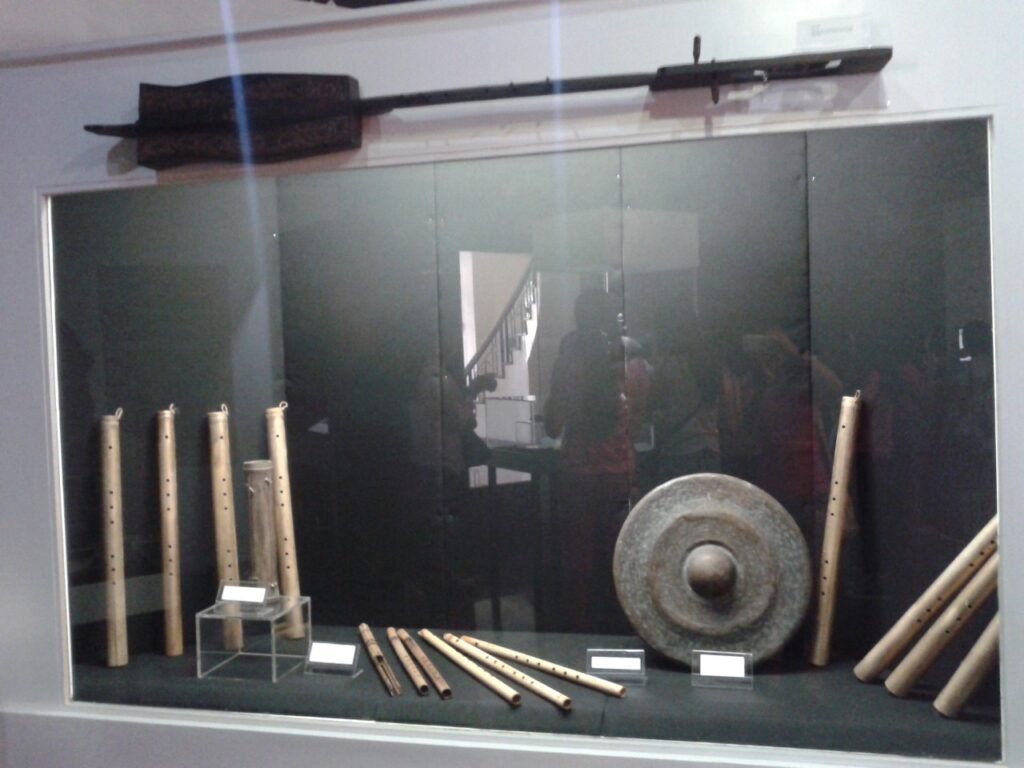
Diving into the rich cultural tapestry and historical depth of Palawan at the Palawan Heritage Center is an enlightening inclusion among the things to do in Palawan.
Located in the provincial capital of Puerto Princesa, this museum and cultural repository offers an immersive journey through the ages, showcasing the diverse heritage, traditions, and history of Palawan and its people.
Learning About the Rich Culture and History of Palawan
The Palawan Heritage Center is designed to educate both locals and visitors about the island’s unique cultural identity.
Through a variety of interactive exhibits, multimedia displays, and well-curated artifacts, the center narrates the story of Palawan’s evolution from its prehistoric past to its present-day status as a melting pot of indigenous and contemporary cultures.
This experience provides valuable insights into the environmental stewardship, community spirit, and artistic expressions that define the people of Palawan.
What Exhibits to Look Forward to
- Prehistoric Palawan: Discover the island’s ancient beginnings, with exhibits featuring archaeological findings, including fossils and tools that offer a glimpse into the lives of the earliest inhabitants.
- The Maritime Silk Road: Learn about Palawan’s role in the historic trade routes that connected it with the rest of Southeast Asia, highlighting the island’s importance in regional commerce and cultural exchange.
- Indigenous Cultures: Explore the rich traditions and vibrant cultures of Palawan’s indigenous communities. This section showcases traditional clothing, crafts, and rituals, providing a deep understanding of the island’s ethnic diversity.
- Environmental Conservation: Given Palawan’s status as a UNESCO Biosphere Reserve, the center dedicates a portion of its exhibits to the conservation efforts that protect its unique ecosystems and biodiversity.
- Contemporary Palawan: A look at modern-day Palawan, exploring the island’s development, challenges, and achievements, as well as its contributions to national identity and the global community.
Visiting the Palawan Heritage Center is more than just a museum tour; it’s an educational journey that connects visitors with the soul of the island.
Through its comprehensive exhibits, the center not only preserves the rich history and cultural heritage of Palawan but also inspires a deeper respect and appreciation for the diversity and resilience of its people.
Whether you’re a history buff, culture enthusiast, or simply curious, the Palawan Heritage Center is a must-visit for anyone seeking to enrich their understanding of this remarkable island, making it a significant cultural experience among the things to do in Palawan.
Conclusion
Palawan, with its breathtaking landscapes, rich cultural heritage, and unparalleled natural beauty, offers a mosaic of experiences that cater to every type of traveler.
From the awe-inspiring journey through the underground rivers of Puerto Princesa and the thrilling zipline adventure at Ugong Rock to the tranquil retreat of Maquinit Hot Springs and the immersive cultural experience at the Palawan Heritage Center, Palawan stands as a testament to the diversity and splendor of the natural world.
The island’s unique blend of adventure, relaxation, and cultural enrichment ensures that there’s something for everyone, making it a must-visit destination for those seeking to discover the wonders of the Philippines.
Whether you’re snorkeling with sea turtles in the crystal-clear waters of Balicasag Island, savoring the flavors of local cuisine on a culinary tour in Puerto Princesa, or exploring the ecological marvel of the mangroves in Sabang, Palawan invites you to embark on a journey of discovery and adventure.
Each activity and attraction we’ve explored offers a glimpse into the vibrant tapestry of life that thrives in this beautiful island province.
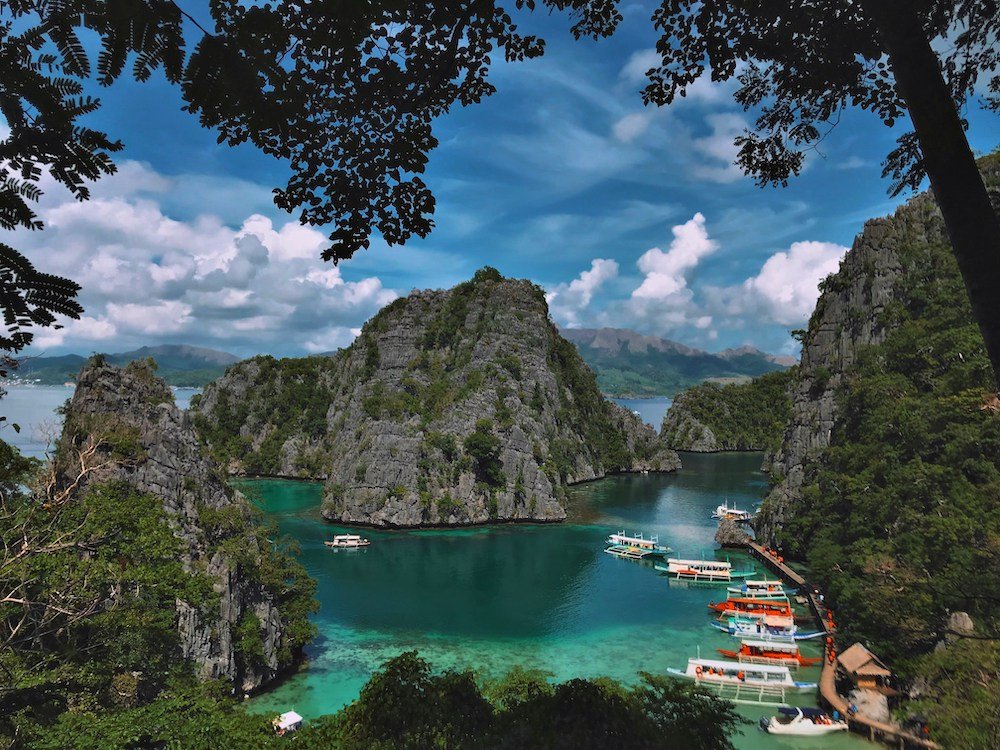
FAQ’s About Palawan in the Philippines:
Why is Palawan so famous?
Palawan is famous for its stunning natural beauty, encompassing pristine beaches, clear turquoise waters, and incredible biodiversity.
It’s home to two UNESCO World Heritage sites: the Puerto Princesa Subterranean River National Park, with its impressive underground river, and the Tubbataha Reefs Natural Park, a marine sanctuary with some of the most beautiful coral reefs in the world.
These attractions, along with its diverse wildlife, rich cultural heritage, and the remarkable landscapes of El Nido and Coron, make Palawan a coveted destination for travelers seeking both adventure and tranquility.
Why Palawan is better than Boracay?
While both Palawan and Boracay offer unique experiences, Palawan is often considered better for travelers seeking natural beauty and ecological diversity.
Palawan’s vast landscapes include jungles, mountains, and underground rivers, providing a wider variety of activities like exploring caves, snorkeling, and wildlife watching.
Boracay, on the other hand, is famous for its vibrant nightlife and stunning white-sand beaches but is more commercialized.
Those looking for a more laid-back atmosphere, with less crowding and a focus on natural exploration, may prefer Palawan.
How many days do you need in Palawan?
A minimum of 5 to 7 days is recommended to explore Palawan adequately.
This allows for visiting key attractions like the Underground River, island hopping in El Nido, diving in Coron, and enjoying some leisure time.
However, extending your stay to 10 days or more can provide a more relaxed itinerary, giving you time to deeply explore the islands, partake in more activities, and even discover less-visited spots.
How do you get to Palawan Philippines?
The most common way to get to Palawan is by flying.
The main entry points by air are Puerto Princesa International Airport, servicing the island’s capital, and Francisco B. Reyes Airport in Coron.
Direct flights are available from major cities in the Philippines, including Manila and Cebu.
Alternatively, ferries are available from Manila and other parts of the country, but they are less frequent and take longer.
What is the most beautiful part of Palawan?
El Nido is often considered the most beautiful part of Palawan, known for its stunning limestone cliffs, crystal-clear waters, and beautiful islands.
Its breathtaking seascapes and unique geological formations have earned it a spot on many lists of the world’s most beautiful places.
El Nido serves as a gateway to the Bacuit Archipelago, offering some of the best snorkeling, diving, and island-hopping experiences in the Philippines.
When should I go to Palawan?
The best time to visit Palawan is during the dry season, from October to May, when the weather is more predictable and conducive to outdoor activities and exploration.
The peak tourist season is from December to March, offering sunny days ideal for beach and water activities.
For those looking to avoid crowds, the months of April and May are also good, with warmer temperatures and less tourist traffic.
Is Palawan one of the 7 Wonders of the world?
While Palawan itself is not listed as one of the New 7 Wonders of the World, the Puerto Princesa Subterranean River National Park in Palawan was named one of the New7Wonders of Nature in 2011.
This recognition is a testament to its extraordinary natural beauty and ecological significance.
What food is Palawan known for?
Palawan is known for its seafood and exotic dishes. Some local specialties include tamilok (woodworm), which is actually a mollusk harvested from mangroves and often eaten raw; kinilaw, a Filipino version of ceviche; and fresh seafood grilled or cooked in various local styles.
Palawan’s cuisine reflects its rich marine biodiversity, offering flavors that are both unique and delicious.
What is the most beautiful island in the world?
The title of “most beautiful island in the world” is subjective and varies depending on individual preferences and criteria.
However, Palawan has frequently been recognized as one of the most beautiful islands in the world by various travel publications and surveys, thanks to its exceptional natural beauty, pristine beaches, and remarkable landscapes.
How long is the boat ride from Manila to Palawan?
The boat ride from Manila to Palawan can take anywhere from 24 to 30 hours, depending on the specific destination in Palawan and the type of ferry service.
It’s a lengthy journey but an option for those looking for a maritime adventure or those who prefer not to fly.
Is it worth going to Palawan?
Absolutely, Palawan is worth visiting for anyone interested in experiencing one of the most biodiverse and geographically stunning regions of the Philippines and the world.
Its natural attractions, from the UNESCO-listed sites to hidden beaches and unique wildlife, offer unforgettable experiences for nature lovers, adventurers, and those seeking relaxation.
The combination of natural beauty, cultural richness, and the warmth of its people makes Palawan a destination that cannot be missed.





